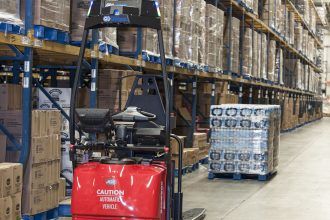Flexible Automation Control

Today’s retailers, parcel companies and manufacturers are often working in rapidly evolving environments. Processes and operations that work today may not tomorrow. Systems must include the ability to pivot to something new and do it on short notice. This includes the material handling and other warehousing equipment involved in getting orders out the door.
One barrier to this goal, however, is that traditional logistics equipment is anything but flexible. For instance, a conveyor system you configured specifically for your 2020 fulfillment operations may not fit the bill in 2022. Physically changing that configuration to fit your current environment may be a costly, time-consuming fix. As equipment suppliers consider new approaches to modular, more flexible automation equipment, an important focus should be on the control system behind it—which combined will allow you to flexibly adjust your operation. This is flexible automation control.
If flexibility is important to the changing demands in your facility, your first step is to develop a strategy to use a fieldbus to distribute devices such as input/output modules and drives instead of traditional hardwired equipment that uses discrete wiring with long homeruns back into a “main cabinet.” Distributed systems alone will add considerable flexibility to the equipment.
It is important to consider the control panel itself for the equipment you’re planning to make more flexible. Rather than working off a big, freestanding control panel out in the middle of your floor, aim to reduce or even eliminate the control panel. Automation companies are advancing in this area, offering more and more devices in a protective housing that can be mounted directly to the equipment, outside of a cabinet. The newest technologies even go all the way with complete control systems that require no cabinet at all. Even components that traditionally required a cabinet such as power supplies, disconnects, relay modules, motor starters, and PLCs, can now be mounted to equipment in a “plug-and-play” way with quick disconnects to eliminate wiring errors, reduce installation time, and add the desired flexibility to the equipment. Once cabinets are removed from the plant floor the space is more adaptable to change.
Another move to make to increase flexibility is to be very particular about the type of fieldbus you select to eliminate potential difficulties when distributing control components across the equipment, particularly large equipment such as sorters.. This way you can avoid adding multiple networks, and potentially multiple PLCs, which reduces flexibility. Consider limitations of fieldbus protocols and consider your potential needs as you grow; after all flexibility is about future requirements, which could mean extending the size of equipment, for example, extending sorters with further sort points. This applies to many varieties of equipment, from ASRS to sorters and conveyors.
Also important is having an open control system that can be flexible and support various fieldbus protocols. Open control systems that support many protocols allow for the use of the best protocol for various applications and ensure communication down- and upstream. Support for both legacy protocols as well as modern protocols ensures optimal flexibility for connectivity. This is a good way to modernize an existing brownfield site and should be the norm when building a new site.
Consider adding distributed safety features as well. Safety standards in fulfillment operations are becoming increasingly stringent. Distributing safety means rather than hardwiring features like emergency stop buttons back to the cabinet, you distribute it over a fieldbus network, for instance.
As far as equipment goes, mobile equipment such as AMRs (autonomous mobile robots) and AGVs (automated guided vehicles) are adding considerable flexibility to fulfillment operations over stationary equipment that is fixed to the floor. Consider how you may integrate mobile equipment with traditional equipment to add flexibility. Here fieldbus protocols and their safety features also play a vital role, going beyond digital safety signals, with support of analog safety. This allows standard encoders to be compared to ensure safe position and velocity of the mobile equipment. Distributed, wireless, safety solutions facilitate mobile devices being guided by a fleet manager which oversees the safety of the entire fleet.
Other robots and new mechatronic technologies are also being integrated with traditional fulfillment equipment to add flexibility and lessen the pressure of labor shortages. Flexible automation technology on the back end is what allows for this easy conversion, extending your operation’s capabilities to meet its ever-evolving demands.
For more articles and podcasts about Conveyors and Sortation:
Podcast: CSS – HOW TO AUTOMATE FOR THOSE WHO HAVEN’T …
Electrical Motor Standard Differences
From Preventative To Predictive Maintenance Of Automation
Large Parcel Shipping Is Growing
5 Ways Robotics Improves Conveyor And Sortation Induction
For more information about the Conveyor and Sortation Solutions Industry Group, click here.



